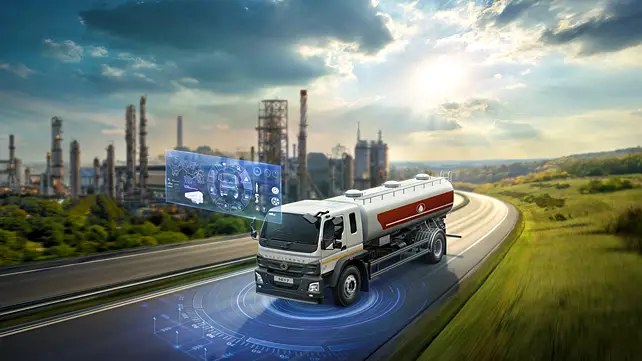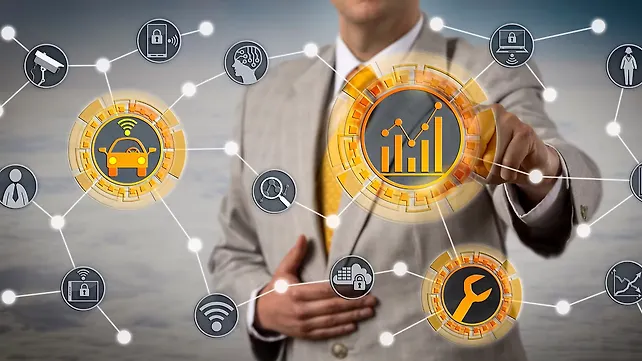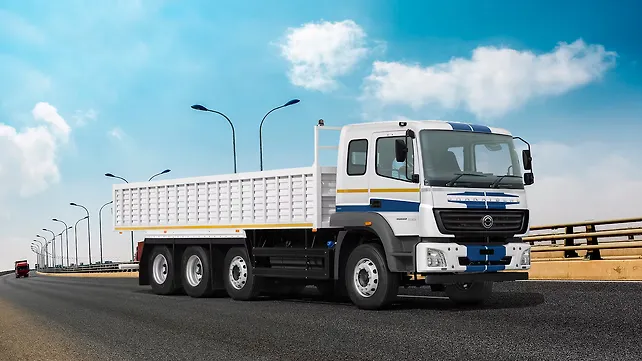
The automotive sector as a whole has never undergone a greater transformation than what it is adapting to today. During these unprecedented times, companies face challenges that are globally unheard of, with the entire value chain being impacted. Physical restrictions in operations and services have accelerated digitalisation by at least 10 years, but the automotive industry quickly integrates innovative technologies to ensure resilience.
Another reason digitalisation is so important is that customers no longer differentiate their expected levels of technology and convenience by industry. This, along with the need to address the challenges posed by COVID, means that the commercial vehicle (CV) industry is moving towards service-based digital offerings.
The CV segment, which once solely focused on product, is now demanding digital servitisation. With this in mind, automotive manufacturers such as Daimler India Commercial Vehicles have doubled their investments in the area of digitalisation.
Telematics For A Competitive Edge
India is developing as a fast-emerging market for connected vehicles, with telematics solutions taking a pivotal role in the trucking and transportation industry. Factors like the availability of internet connectivity and smartphone integration via apps have propelled the adoption of telematics among users.
Most OEMs in India have now launched onboard telematics solutions, a move well-received amongst fleet managers, who see a sharp rise in efficiency, leading to better profits. For example, over 11,000 BharatBenz vehicles on Indian roads already use Daimler’s ‘Truckonnect’ telematics solution.
The telematics systems adopted by OEMs and automotive companies are fully integrated with the vehicle’s electronics, thereby providing fleet operators critical insight into their vehicles and drivers’ behaviour. Telematics solutions use sensors fitted in the vehicle to convert data for in-depth analysis, ensuring a unique value proposition for customers.

In real terms, this means fleet managers know exactly where their vehicles are at any point in time – and how they are being driven. Alarms will sound if there is a sudden drop in a vehicle’s fuel or if it veers away from its designated route. As a result, the risk of fuel and vehicle theft is greatly reduced. Additionally, with real-time access to the condition of every asset in their fleet, CV owners see significant efficiency gains. Telematics lets them develop more efficient routes, maintain schedules, enhance safety, security and uptime.
Thanks to better fleet and driver utilisation, CV owners can meet rising customer demands with existing resources. Telematics is one technology that will certainly reshape the trucking industry, not only in fleet management and maintenance areas but also in sales and aftersales.
Digital Innovations Enhance Customer Experience
Automotive companies are now implementing digital initiatives across the interface of customer interactions from servicing to sales, to products. These initiatives include digital platforms that help customers optimise their orders based on vehicle availability and uptime.
Customers can order vehicle parts directly via an app and have the part dispatched to the vehicle’s nearest warehouse. In addition, they can track the shipment progress and make digital payments. Using apps such as BharatBenz’s ‘ProServ’ solution, customers can access a full range of services, including advance booking, parts ordering, renewal of contracts, extended warranty, insurance, fleet maintenance, 24x7 RSA, and integration with all types of online payment options.
Other apps will provide them with ongoing news updates about the CV industry, transport market and the industry. Customers now expect to have this information readily available in the palm of their hands via their smartphones. As time goes on, the convenience offered by digitalisation is becoming a basic consumer expectation in the CV industry, just as it is for other fields.
Digital Transformation For Success, Safety
Indian fleet owners are always on the lookout for ways to improve their margins, so they are certainly eager for any new technology or product that offers them that opportunity. This is particularly relevant when it comes to labour scarcity. So what better way to attract drivers to the profession than by offering them a safer working environment? Here again, digital transformation offers hope.

Take the example of the Driver State Monitoring System (DSMS). The main purpose of a DSMS is to warn drivers when they may be distracted or falling asleep, an essential feature for the hard-working operators working long hours by themselves. The DSMS employs state-of-the-art artificial intelligence and computer vision technologies to identify facial patterns, including the movement of the eyes, face, head, and other cues. Based on this, it can differentiate between safe driving conditions and driver drowsiness/inattentiveness – in this case, it gives an acoustic and visual alert.
Tyre Pressure Monitoring Systems (TPMS) are another promising development in safety-related technology. Aside from reducing fuel efficiency, incorrectly inflated tyres are a common factor in road accidents. With the electronic TPMS system, drivers get real-time information about tyre pressure and warnings when too high or low. Several manufacturers are now working on introducing this technology for safety enhancement, which can only help entice more people to train as drivers.
Digitalisation Across Organisation
Clearly, the pandemic has pushed the Indian CV sector to embrace digitalisation. This is noticeable all along the supply chain, from OEMs to the smallest component manufacturers. However, an organisation can only realise the full potential of digital transformation, when external stakeholders are transforming at the same rate and speaking the same language.
To ensure that the workforce is digitally minded, organisations must develop a digital culture by rolling out digital training across various departments. This must be done to ensure employees are not completely dependent on IT but are armoured with basic skills and understanding of the digital technologies being introduced and enthusiastic about embarking on the digital transformation journey.
Like their counterparts in the passenger car industry, players in the commercial vehicle field must embrace digitalisation to ensure a sustainable ecosystem.
In conclusion, only companies who prioritise digitalisation internally and externally can expect to thrive in the post-pandemic world.
About the Author: Satyakam Arya is the MD & CEO of Daimler India Commercial Vehicles; views expressed are personal.